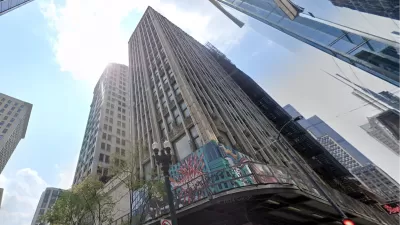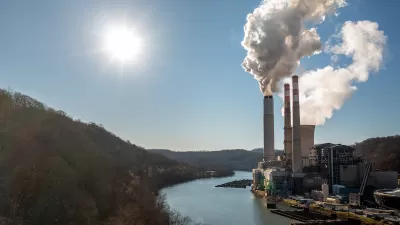Chris Bentley reports on the complex discussions centered around what to do with the sites of two massive coal plants closing this month in Chicago. As Bentley notes, "what happens to these 132 acres in Chicago could have nationwide implications."
The closing of the Fisk and Crawford coal plants in Chicago's southwest side this month is the result of a variety of factors including mounting concerns from environmental groups and the decrease in natural gas prices. Now the community is faced with the difficult decision of what to do with the two sites, which are owned by Midwest Generation.
A task force set up by Mayor Rahm Emanuel in March has been tackling various reuse ideas that need to address pertinent issues like "historic preservation, environmental cleanup, and unemployment in a rapidly gentrifying area." The project has proven productive thus far, claims Bentley, as negotiations between Midwest Generation and local agencies have been "collaborative and respectful."
"'This is the first brownfield coal site that has engaged in this kind of process with the community,' said Jean Pogge, CEO of the Delta Institute, the Chicago–based non-profit leading the mayor's task force."
Community members have been vocal in their desire to see the sites provide new jobs and green space. Housing was taken off the list due to the sites' industrial zoning and residents' fears of gentrification. The city must determine the toxicity of the areas before any plans move forward.
These plants follow a string of other coal plant closings, as "[m]ore than 100 coal plants have closed nationwide in the last three years, roughly one-sixth the total number of plants in the United States." Worldwide, former coal plant sites have been reborn with a range of inventive uses, from parks to museums. As the discussion over the future of the Fisk and Crawford plants continues, the groups involved "hope the task force will be a model for community engagement, as well as a positive influence on the community in this time of transition."
FULL STORY: New Generation

Study: Maui’s Plan to Convert Vacation Rentals to Long-Term Housing Could Cause Nearly $1 Billion Economic Loss
The plan would reduce visitor accommodation by 25% resulting in 1,900 jobs lost.

Alabama: Trump Terminates Settlements for Black Communities Harmed By Raw Sewage
Trump deemed the landmark civil rights agreement “illegal DEI and environmental justice policy.”

Why Should We Subsidize Public Transportation?
Many public transit agencies face financial stress due to rising costs, declining fare revenue, and declining subsidies. Transit advocates must provide a strong business case for increasing public transit funding.

Paris Bike Boom Leads to Steep Drop in Air Pollution
The French city’s air quality has improved dramatically in the past 20 years, coinciding with a growth in cycling.

Why Housing Costs More to Build in California Than in Texas
Hard costs like labor and materials combined with ‘soft’ costs such as permitting make building in the San Francisco Bay Area almost three times as costly as in Texas cities.

San Diego County Sees a Rise in Urban Coyotes
San Diego County experiences a rise in urban coyotes, as sightings become prevalent throughout its urban neighbourhoods and surrounding areas.
Urban Design for Planners 1: Software Tools
This six-course series explores essential urban design concepts using open source software and equips planners with the tools they need to participate fully in the urban design process.
Planning for Universal Design
Learn the tools for implementing Universal Design in planning regulations.
Smith Gee Studio
Alamo Area Metropolitan Planning Organization
City of Santa Clarita
Institute for Housing and Urban Development Studies (IHS)
City of Grandview
Harvard GSD Executive Education
Toledo-Lucas County Plan Commissions
Salt Lake City
NYU Wagner Graduate School of Public Service





























